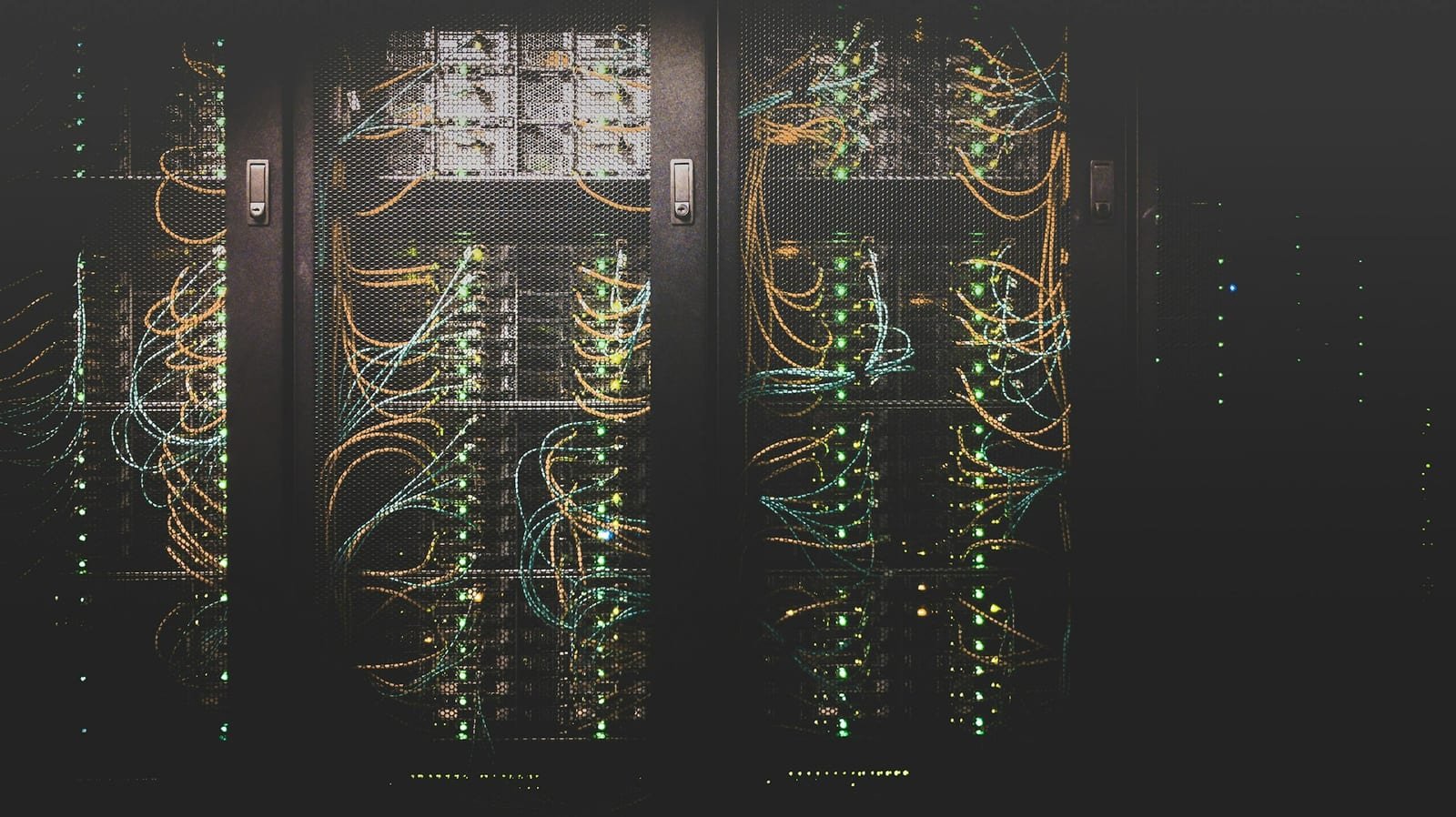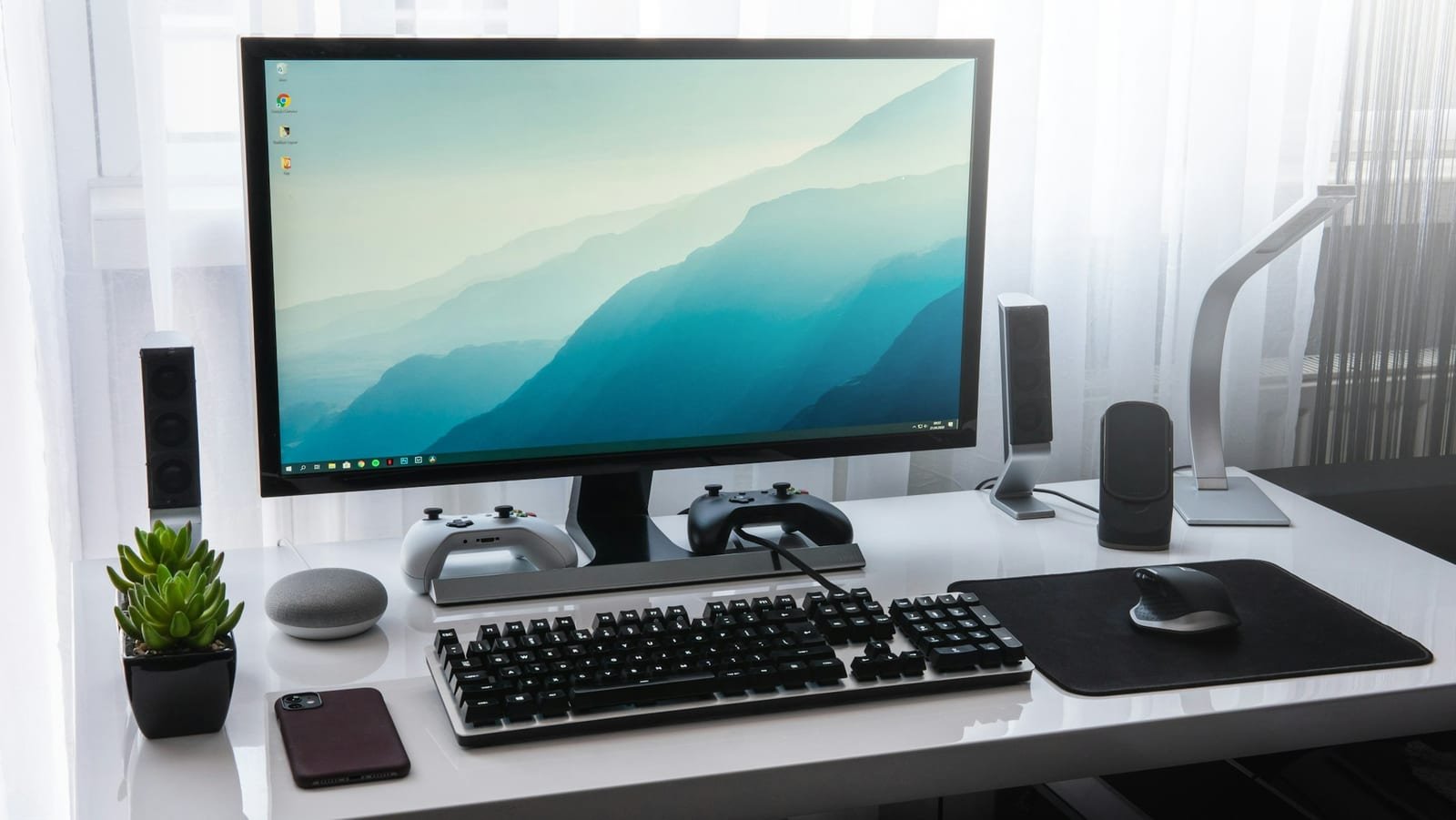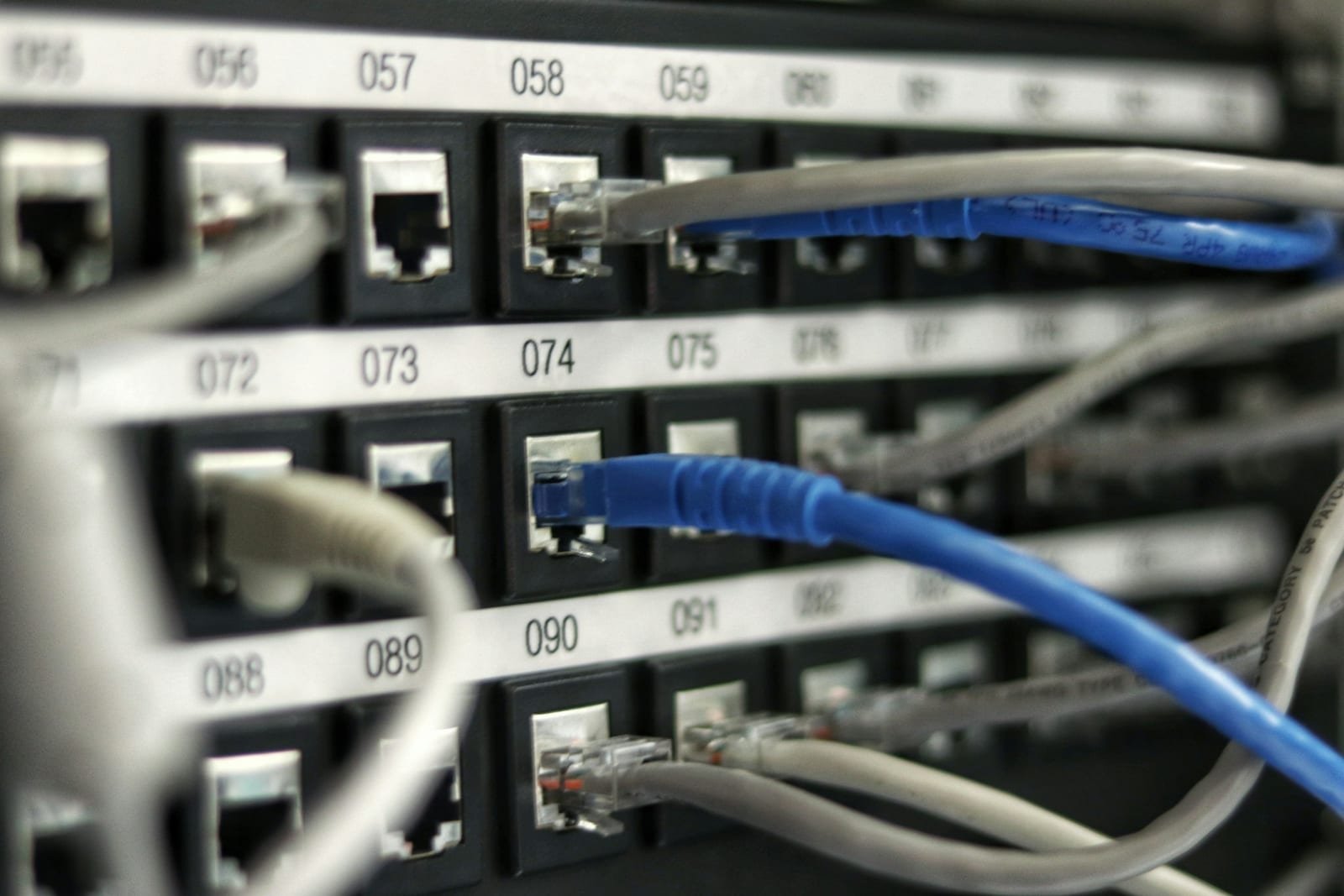Blog • • 10 min read
The Website Speed & SEO Checklist for 2025


Website speed directly impacts your bottom line. Research shows that a 1-second delay in page load time reduces conversions by 7%, while pages loading in under 2 seconds have conversion rates 74% higher than slower alternatives. Google's algorithm now prioritizes fast-loading sites, making speed optimization both a user experience imperative and an SEO necessity.
The cost of slow websites extends beyond lost sales. Amazon calculated that every 100ms of delay costs them 1% in revenue—approximately $1.6 billion annually. For small businesses, this translates to lost leads, reduced customer trust, and significantly higher customer acquisition costs as marketing dollars work less efficiently on slow sites.
This comprehensive checklist delivers proven strategies that improve Core Web Vitals scores, boost search rankings, and increase conversion rates. Every recommendation is based on measurable business impact and can be implemented with standard tools and hosting platforms.
Understanding Core Web Vitals: The metrics that determine search rankings and conversions
Google's Core Web Vitals represent the technical foundation of user experience, directly influencing both search rankings and customer behavior. Understanding these metrics helps prioritize optimization efforts for maximum business impact.
Largest Contentful Paint (LCP): First Impression Speed
What it measures: Time until the largest visible element loads completely—usually your hero image, video, or main headline.
- Good: 2.5 seconds or faster (correlates with 67% higher conversion rates)
- Needs improvement: 2.5-4.0 seconds (average 23% conversion decrease)
- Poor: Over 4.0 seconds (conversion rates drop 45-60%)
Business Impact: LCP directly affects first impressions. Sites with fast LCP scores see 34% lower bounce rates and 28% higher engagement time.
Interaction to Next Paint (INP): Responsiveness Reality
What it measures: How quickly your site responds when users click buttons, fill forms, or navigate menus.
- Good: Under 200ms response time (optimal user experience)
- Needs improvement: 200-500ms (noticeable delay, affects trust)
- Poor: Over 500ms (users perceive site as broken or cheap)
Business Impact: Slow interactions increase form abandonment by 68% and reduce repeat visits by 43%.
Cumulative Layout Shift (CLS): Visual Stability
What it measures: How much page elements jump around during loading—ads appearing, images resizing, fonts swapping.
- Good: Under 0.1 (smooth, professional experience)
- Needs improvement: 0.1-0.25 (noticeable jank, reduces trust)
- Poor: Over 0.25 (frustrating experience, high bounce rates)
Business Impact: High CLS scores correlate with 78% higher cart abandonment and 52% fewer form completions.
The Revenue Connection
Core Web Vitals directly impact business metrics:
- E-commerce: Sites scoring "Good" on all CWV see 24% higher conversion rates
- Lead Generation: Fast sites generate 31% more qualified leads from the same traffic
- SEO Rankings: CWV improvements correlate with 16% average ranking increases
- User Retention: Good CWV scores improve return visitor rates by 43%
Performance measurement strategy: Tools and monitoring that drive results

Effective performance optimization requires both baseline measurement and ongoing monitoring. The key is measuring what matters to your business—not just technical scores—and tracking improvements over time.
Essential Performance Measurement Tools
Google PageSpeed Insights (Free, Required)
Your primary tool for Core Web Vitals measurement:
- Lab Data: Simulated tests on standard hardware
- Field Data: Real user measurements from Chrome users (more valuable)
- Optimization Suggestions: Prioritized recommendations with impact estimates
- Mobile vs Desktop: Separate scores for different device experiences
Usage Strategy: Test your top 5 pages monthly, focusing on pages that generate revenue or leads.
Google Search Console (Free, Critical)
Real user data that directly affects your search rankings:
- Core Web Vitals Report: Shows which pages pass or fail Google's requirements
- Field Data Timeline: 28-day rolling averages of real user experiences
- Issue Grouping: Identifies pages with similar performance problems
- Ranking Impact: Correlate CWV improvements with search position changes
GTmetrix (Freemium, Detailed Analysis)
Comprehensive performance analysis with actionable insights:
- Waterfall Analysis: See exactly which resources slow down loading
- Performance History: Track improvements over time
- Global Testing: Test from different geographic locations
- Competition Comparison: Benchmark against competitors
WebPageTest (Free, Advanced)
Professional-grade testing for complex optimization:
- Connection Throttling: Test on 3G, 4G, and various connection speeds
- Multiple Runs: Statistical analysis of performance consistency
- Video Capture: Visual timeline of page loading
- Advanced Metrics: Speed Index, Time to Interactive, and custom metrics
Measurement Methodology for Business Impact
Baseline Establishment (Week 1)
- Identify Critical Pages: Focus on pages that drive conversions, leads, or revenue
- Document Current Metrics: Record CWV scores, conversion rates, and bounce rates
- Test Multiple Scenarios: Different devices, connection speeds, and geographic locations
- Business Metrics Baseline: Note current conversion rates, form completion rates, and average session duration
Ongoing Monitoring Strategy
- Weekly Reviews: Check Search Console CWV reports and PageSpeed Insights scores
- Monthly Deep Dives: Full GTmetrix or WebPageTest analysis of key pages
- Quarterly Audits: Comprehensive review including competitor comparisons
- Post-Change Testing: Immediate testing after any website updates or optimizations
Correlating Performance with Business Metrics
Technical improvements only matter if they drive business results. Track these correlations:
Conversion Rate Tracking
- Before/After Analysis: Compare conversion rates pre and post optimization
- Page-Level Impact: Identify which page speed improvements drive the highest conversion lifts
- Device Segmentation: Mobile speed improvements often show higher conversion impact than desktop
- Traffic Source Analysis: Paid traffic converts better on fast sites (better ROI from ad spend)
SEO Performance Correlation
- Ranking Improvements: Track search position changes after CWV improvements
- Organic Traffic Growth: Monitor organic sessions and click-through rates
- Search Console Metrics: Watch average position and impressions for target keywords
- Local SEO Impact: Speed improvements often boost local search rankings significantly
User Experience Metrics
- Bounce Rate Reduction: Fast sites see 25-40% lower bounce rates
- Session Duration: Speed improvements typically increase time-on-site by 15-30%
- Pages per Session: Faster sites encourage more page exploration
- Return Visitor Rate: Good performance builds loyalty and repeat visits
Performance Monitoring Automation
Setting Up Alerts and Notifications
- Search Console Alerts: Email notifications when CWV scores deteriorate
- Third-Party Monitoring: Tools like Pingdom or UptimeRobot for continuous monitoring
- Google Analytics Goals: Set up conversion tracking to correlate with speed changes
- Weekly Reports: Automated summaries of key performance metrics
Testing Cadence and Responsibilities
- Daily: Automated uptime and basic speed monitoring
- Weekly: Manual check of Search Console CWV reports
- Monthly: Comprehensive testing with detailed analysis
- After Changes: Immediate testing following any website updates
Image optimization: The fastest path to performance gains
Images typically account for 65% of total page weight, making them the highest-impact optimization target. Strategic image optimization can improve LCP by 40-60% and reduce total page size by 50-80% while maintaining visual quality.
Modern Image Format Strategy
WebP Implementation (30-50% Size Reduction)
WebP provides superior compression with better quality than JPEG and PNG:
- Browser Support: 97% of browsers now support WebP (use with fallbacks)
- Compression Gains: 25-50% smaller file sizes than equivalent JPEG images
- Quality Maintenance: Better quality at smaller sizes, especially for graphics with text
- Implementation: Use `
` elements with WebP sources and JPEG fallbacks
AVIF for Maximum Compression (50-70% Size Reduction)
Next-generation format for cutting-edge optimization:
- Compression Superior: 50-70% smaller than JPEG with same quality
- Browser Support: Chrome, Firefox, Opera (80% coverage, growing rapidly)
- Best Use Cases: Hero images, detailed photos, any image over 100KB
- Implementation Strategy: AVIF → WebP → JPEG fallback chain
Responsive Image Implementation
Strategic Srcset Usage
Serve appropriately sized images for different devices and screen densities:
- Breakpoint Strategy: Create images at 480w, 800w, 1200w, 1600w for most use cases
- Density Variations: 1x and 2x versions for high-DPI displays
- Size Calculations: Never serve images more than 20% larger than display size
- Bandwidth Savings: Mobile users download 60-80% smaller images
Art Direction with Picture Elements
- Mobile Optimization: Crop images differently for mobile vs desktop viewing
- Orientation Handling: Landscape images on desktop, portrait crops on mobile
- Focus Point Preservation: Ensure important image elements remain visible at all sizes
- Text Legibility: Adjust image crops to maintain text readability across devices
Compression and Quality Optimization
JPEG Compression Strategy
- Quality Settings: 70-85% for most images, 60-70% for thumbnails, 85-95% for hero images
- Progressive JPEG: Better perceived performance as images load incrementally
- Chroma Subsampling: 4:2:0 setting reduces file sizes without visible quality loss
- Strip Metadata: Remove EXIF data that adds unnecessary bytes
PNG Optimization Techniques
- Color Palette Reduction: Reduce to 256 colors or fewer when possible
- Transparency Optimization: Use PNG-8 with alpha for simple transparency
- Tool Selection: TinyPNG, ImageOptim, or Squoosh for optimal compression
- SVG Alternative: Convert simple PNGs to SVG for infinite scalability
Loading Strategy and Performance Impact
Lazy Loading Implementation
Strategic lazy loading can improve initial page load by 40-70%:
- Above-the-Fold Exception: Load hero images immediately with `loading="eager"`
- Native Lazy Loading: Use `loading="lazy"` for 95% browser support
- Intersection Observer Fallback: JavaScript polyfill for older browsers
- Loading Placeholder: Show blurred or skeleton versions during load
Preloading Critical Images
- LCP Image Preload: `` for largest contentful paint images
- fetchpriority="high": HTML5 attribute for critical image prioritization
- Timing Consideration: Only preload images visible in first viewport
- Format Specification: Preload the exact format the browser will use
Preventing Layout Shift (CLS Optimization)
Dimension Specification
- Width and Height Attributes: Always specify dimensions to reserve space
- Aspect Ratio CSS: Use `aspect-ratio` property for responsive scaling
- Container Queries: Maintain proportions across different container sizes
- Skeleton Screens: Show placeholder content while images load
Advanced CLS Prevention
- Size Calculation: Calculate final dimensions before setting src attribute
- Font Replacement: Ensure web fonts don't cause image caption reflow
- Dynamic Content: Reserve space for user-generated content images
- Ad Integration: Define ad container sizes to prevent content jumping
Automated Image Optimization Workflows
Build Process Integration
- Webpack/Vite Plugins: Automatic compression and format conversion during build
- CI/CD Integration: Image optimization in deployment pipelines
- Content Management: Automatic optimization when images are uploaded
- CDN Processing: Services like Cloudinary or ImageKit for dynamic optimization
Quality Assurance Process
- Visual Regression Testing: Ensure optimization doesn't degrade visual quality
- Performance Monitoring: Track LCP improvements after image optimizations
- User Experience Testing: Monitor conversion rates and user engagement
- Cross-Device Validation: Test image quality across different devices and screens
Fonts: the sneaky source of jank
- Limit families/weights. Two families, three weights total.
- Use
font-display: swapor load system fonts if your brand allows it. - Preconnect to font CDNs and preload the single most critical font file.
CSS: render fast, render once
- Inline the critical CSS for above-the-fold content; defer the rest.
- Kill dead CSS if you've accumulated a large framework.
- Prefer small utility frameworks (you're already on Tailwind CDN).
JavaScript: ship less of it
- Defer non-critical scripts. Avoid duplicate includes (Stripe was fixed already—keep it that way).
- Lazy-load widgets that aren't needed on first paint.
- Audit third-party scripts quarterly. Anything not tied to revenue gets a harder look.
Server and caching

- Turn on caching headers for static assets (images, CSS, JS). One week to one month is typical.
- Use a CDN if your audience is spread out geographically.
- Gzip or Brotli compression should be enabled by default on modern hosts.
CLS fixes you can ship today
- Reserve space for images and embeds with width/height or aspect-ratio boxes.
- Don't inject banners above content after the page starts rendering.
- Make sure the web font strategy doesn't cause reflow (swap early, then settle).
INP improvements without refactoring
- Throttle heavy scripts on scroll. Don't attach five listeners to every card.
- Defer analytics and heatmaps until after first interaction when possible.
- Use passive event listeners for scroll/touch.
Monitoring: trust but verify
Set up two guardrails: field data (real users via Search Console) and lab data (your periodic tests). Celebrate improvements in interaction, not just scores. Your best signal is a lower bounce rate and more leads from the same traffic.
30/60/90 plan
- 30 days: compress images, fix hero sizes, remove duplicate scripts, enable cache headers.
- 60 days: streamline fonts, lazy-load third-party widgets, add explicit dimensions everywhere.
- 90 days: inline critical CSS, split JS by route, audit what's left. Treat each third-party include like rent.
Why this matters for conversion
Speed isn't abstract. It's the feeling of polish that nudges a skeptical visitor to trust you. Faster pages reduce decision friction, especially on mobile. When paired with clear CTAs, you'll see more form submissions and calls without buying a single extra click.
Advanced performance strategies for competitive advantage
Once you've implemented the fundamental optimizations, these advanced strategies can provide additional competitive advantages and measurable business improvements.
Edge Computing and CDN Optimization
Strategic CDN Implementation
- Multi-CDN Strategy: Use different CDNs for different asset types (images, videos, static files)
- Edge Processing: Server-side rendering at edge locations for dynamic content
- Smart Caching: Cache warming and purging strategies for frequently updated content
- Geographic Optimization: Serve content from the closest geographic edge server
Performance Benefits and ROI
- Global Load Times: 40-70% faster load times for international visitors
- Server Load Reduction: 60-80% reduction in origin server requests
- Uptime Improvement: Redundancy and failover capabilities
- Bandwidth Cost Savings: Reduced origin bandwidth usage
Database and Backend Optimization
Query Optimization for Speed
- Database Indexing: Optimize frequently accessed data queries
- Caching Layers: Redis or Memcached for database query results
- Connection Pooling: Reuse database connections to reduce latency
- Query Analysis: Identify and optimize slow database queries
API Performance Enhancement
- Response Compression: Gzip/Brotli compression for API responses
- Pagination Strategy: Limit response sizes and implement smart pagination
- Caching Headers: Appropriate cache control for different API endpoints
- Rate Limiting: Prevent abuse while maintaining performance
Mobile-first performance optimization
With mobile traffic representing 60-80% of website visits, mobile-specific optimizations often provide the highest ROI for conversion rate improvements.
Mobile-Specific Speed Strategies
Touch and Interaction Optimization
- Touch Target Sizing: Minimum 44px touch targets for better usability
- Scroll Performance: Optimize scroll events and smooth scrolling
- Form Optimization: Auto-complete, input types, and validation feedback
- Gesture Recognition: Swipe, pinch, and other mobile-native interactions
Network-Aware Loading
- Connection Quality Detection: Adapt content based on network speed
- Data Saver Mode: Reduced quality modes for slow connections
- Progressive Enhancement: Core functionality works on 2G networks
- Adaptive Bitrate: Dynamic quality adjustment for video content
Conversion-focused performance implementation
The ultimate goal of performance optimization is business growth. Here's how to implement changes that directly impact your revenue metrics.
Revenue-Impact Prioritization
High-Impact, Low-Effort Optimizations (Week 1)
- Hero Image Optimization: Compress and optimize above-the-fold images (typical 30-50% LCP improvement)
- Remove Unused Scripts: Audit and remove unnecessary JavaScript (20-40% faster initial load)
- Enable Compression: Gzip/Brotli for all text assets (15-30% size reduction)
- Cache Headers: Set appropriate caching for static assets (instant repeat visit improvement)
Medium-Impact, Medium-Effort Optimizations (Week 2-3)
- Lazy Loading Implementation: Defer below-the-fold content loading (25-45% initial load improvement)
- Font Optimization: Web font loading strategy and fallbacks (reduce CLS and improve perceived speed)
- Critical CSS Inlining: Inline above-the-fold styles (faster first render)
- Image Format Modernization: WebP/AVIF implementation with fallbacks (30-60% image size reduction)
High-Impact, High-Effort Optimizations (Month 2+)
- CDN Implementation: Global content delivery network setup
- Server-Side Rendering: Pre-render dynamic content for faster initial loads
- Database Optimization: Query optimization and caching implementation
- Progressive Web App Features: Service workers and offline functionality
Measuring Business Impact
Key Performance Indicators (KPIs)
- Conversion Rate Changes: Track before/after conversion percentages
- Revenue per Visitor: Monitor average transaction value improvements
- Lead Generation Metrics: Form completion rates and contact form submissions
- Customer Acquisition Cost: How speed improvements affect marketing efficiency
A/B Testing Performance Changes
- Speed vs. Conversion Testing: Test different performance levels against conversion rates
- Feature Toggle Implementation: Gradual rollout of performance improvements
- Segment Analysis: Different performance impacts on mobile vs. desktop users
- Geographic Testing: Performance improvements in different markets
Getting professional performance optimization help
While many optimizations can be implemented in-house, certain scenarios benefit from professional expertise to maximize ROI and avoid costly mistakes.
When to Hire Performance Specialists
- E-commerce Sites: High transaction volumes where small improvements yield significant revenue
- High-Traffic Websites: Sites with 100,000+ monthly visitors where optimizations scale dramatically
- Mobile-Heavy Audiences: Businesses where mobile conversion is critical to success
- Competitive Industries: Markets where site speed provides competitive differentiation
- Technical Complexity: Sites with complex backend systems or legacy architecture
Professional Optimization ROI
Performance Consulting ($2,000-10,000)
- Services: Comprehensive audit, optimization roadmap, implementation guidance
- ROI: Typically 300-500% return through conversion rate improvements
- Timeline: 2-4 weeks for assessment and recommendations
- Best for: Growing businesses with technical teams
Full Implementation Services ($5,000-25,000)
- Services: Complete optimization implementation, monitoring setup, ongoing support
- ROI: 200-400% return for e-commerce and lead generation sites
- Timeline: 4-8 weeks for comprehensive optimization
- Best for: High-revenue sites or businesses without technical resources
Your performance optimization success plan
Website speed optimization is not a one-time project—it's an ongoing competitive advantage that compounds over time. Companies that consistently prioritize performance see cumulative improvements in conversion rates, search rankings, and customer satisfaction.
Start with the high-impact, low-effort optimizations outlined in this checklist. Focus on measurable business metrics rather than just technical scores. Remember that a 0.1-second improvement in load time can translate to thousands of dollars in additional revenue for growing businesses.
Ready to accelerate your website performance? Begin with the Week 1 checklist items this week, and establish baseline measurements before making changes. Your customers will notice the difference, and your conversion rates will thank you.
If you need expert assistance implementing these performance optimizations or want a comprehensive performance audit of your current site, our team specializes in speed optimization that drives measurable business results. We've helped hundreds of businesses achieve sub-2-second load times and seen conversion rate improvements averaging 35% across our client base.
Want this done for you?
Get a free audit—We'll text or call you within 4 hours (business hours).
Get My Free Audit →